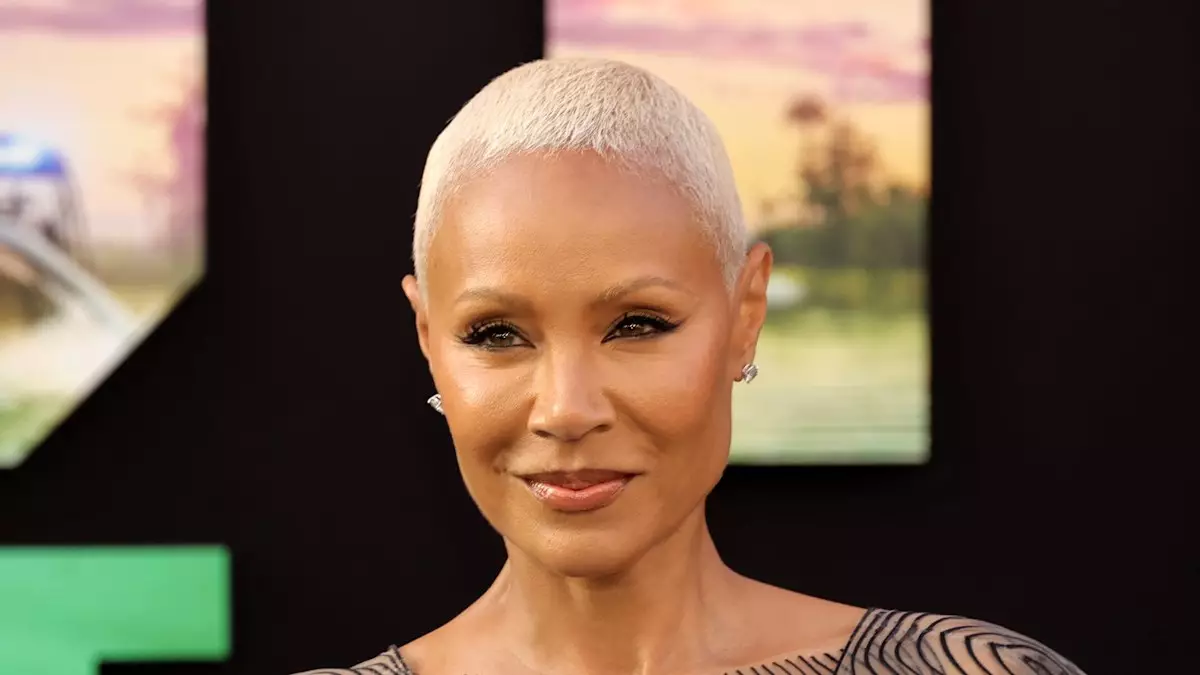Jada Pinkett Smith, an emblem of resilience, has consistently exemplified the courage to embrace change, especially in the face of adversity. Recently, the actress has elicited a whirlwind of admiration from fans through her fresh look, shared on Instagram. At 53, she has unveiled a striking image that not only highlights her physical transformation but serves as a testament to her triumphant journey with alopecia. In this article, we delve into Jada’s evolution and the deeper meanings surrounding her bold choices.
In a recent Instagram post that captivated her followers, Jada unveiled radiant blonde hair, artfully bleached eyebrows included. With a minimalist caption of “Ice,” her subtle yet impactful choice reflected not just a change in appearance but a deeper narrative about self-expression and empowerment. The overwhelming positive responses—filled with flames, hearts, and praises for her stunning transformation—demonstrate the power of celebrity influence and personal authenticity. Comments like “Still THAT GIRL!” and “The only woman who can pull off a platinum buzz” encapsulate the public’s admiration for her fearless take on beauty standards.
Jada Pinkett Smith’s relationship with her hair hasn’t always been effortless. In 2018, during an impactful episode of her talk show, “Red Table Talk,” she openly addressed her experience with alopecia—a condition that leads to hair loss. Expressing her vulnerability, she shared the alarming moment when she first noticed her hair shedding. “I was in the shower one day and then just handfuls of hair, just in my hands,” she recounted. This moment ignited a chain reaction not only in her personal life but also in her broader public narrative, turning her struggle into a platform for discussion, understanding, and healing.
After years of contemplating this significant shift in her identity, Jada made the decision to shave her head in 2021—a choice encouraged by her daughter, Willow, who had similarly chosen to embrace a bold look. Jada’s Instagram announcement celebrated this transition as an opportunity for renewal, emphasizing the importance of self-acceptance and shedding unnecessary attachments. She reflected, “My 50s are ’bout to be Divinely lit with this shed,” showcasing a blend of vulnerability and empowerment that resonates with many facing personal struggles.
The journey that Jada has undergone extends far beyond her physical appearance—it is about embracing vulnerability and accepting oneself through challenging times. Her candid discussions regarding alopecia have opened the door for broader conversations about beauty standards, particularly among Black women, who often face societal pressures connected to their hair. Jada’s narrative echoes the sentiment that beauty transcends physical attributes, nudging individuals to find strength and self-worth beyond aesthetics.
In an interview with The Guardian, Jada reflected on learning the significance of detachment in relation to her appearance. She articulated how her diagnosis has served as a “great teacher,” encouraging her to explore notions of beauty beyond hair. “It was scary. I had to really dig deep and see the beauty of myself beyond my aesthetics,” she shared. Her perspective illustrates that true beauty involves vulnerability, introspection, and the courage to evolve.
As Jada Pinkett Smith continues to navigate her career and personal life, her evolution serves as an inspiration for many who find themselves dealing with similar challenges. Her ability to adapt and embrace her identity speaks to a broader narrative—one where self-acceptance and authenticity triumph over societal expectations. Jada’s story encourages individuals to recognize their intrinsic beauty and strength, even in times of fear and uncertainty.
In a world that often emphasizes physical perfection, Jada’s journey reminds us that embracing change is not just about altering appearance but about nurturing a profound connection with oneself. Her radiant selfie and candid discussions challenge the norms of beauty and encourage a celebration of uniqueness, paving the way for a more inclusive and compassionate understanding of self-worth and identity.

